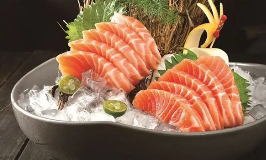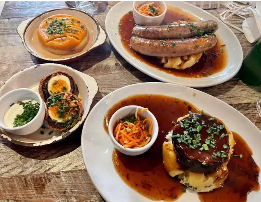Japanese cuisine in the dining culture, the real interpretation of the nature of the Japanese nation
4 min read
The earliest contact with Japanese cuisine, is high school graduation, my sister invited me to eat a meal of sushi. Fortunately, I have seen the “Crayon Shins” about the funny plot of sushi, so although I have not eaten, but also won’t make any jokes because of too fresh, but after this meal, let me have an interest in Japanese food culture.Rotate the food culture in sushi.
Nowadays, we often see the revolving sushi in the food court, in fact, the history is not long, only more than half a century. At that time, after the end of World War II, the United States changed its attitude of suppressing Japan due to the disputes on the Korean Peninsula, and began to vigorously support Japan, which enabled the rapid economic development of Japan.
Spurred on by the desire to eat, the first priority of the wealthy is to satisfy their appetite for food, Japan’s restaurant industry has sprung up and innovated constantly. It was against this background that a Japanese named Yoshiaki Shiraishi introduced the way Asahi Beer Company bottles were transported on the conveyor belt to the restaurant, forming the original prototype of sushi.
Simply swapping wine tasting for sushi on the conveyor belt created a dining experience that was quickly imitated by others and became a unique example of Japanese cuisine.
In fact, the method of turning food around has appeared in Japan for a long time. Bamboo slices are used to drain mountain spring water into a circular stone trough, and then noodles are placed into the trough. This is the famous “cold noodles with flowing water”. It is not easy to pick up the noodles accurately with chopsticks as they rotate along the flowing water in the stone trough. It is considered the earliest form of modern sushi.
It is a great feature of Japanese national spirit to absorb foreign culture and develop it into its own unique culture after full digestion.
For example, the Book of Tea introduced into Japan was gradually carried forward for the tea ceremony, and the Tang sword forging technology, which was transferred from the Tang Dynasty, was also integrated into the national samurai sword. Originating from Si, but higher than Si, have to let people admire this spirit. Even in modern times, the semiconductor and automobile industries originated in Europe and the United States were also adopted by Japan and almost starved to death.
The reason for the light daily forecast.
Japanese cuisine has always been characterized by its lightness. The reason for its lightness is that in the past thousands of years, as an island nation, there were very few products. Therefore, there was no more land or resources for animal husbandry, and there were very few sources of oil and meat.
In order to supplement protein, the Japanese had to vigorously develop the fishing industry, and the lack of oil and iron, stir-frying naturally became a luxury, so they had to eat light and fresh food. For this reason, many people also link the origin of Japanese sashimi with the fish slices of China in the Tang and Song dynasties. In fact, it is a bit far-fetched, after all, it is a primitive people to eat hair and drink blood. Eating sashimi is more of an ancient Japanese life forced, believe that even if there is no foreign introduction, also did not affect their raw fish.
The light Japanese cuisine, derived from the resources of Japan island, coupled with the island’s own harsh climate, makes Japanese people naturally have a strong sense of anxiety. As a so-called disaster-prone island nation, Japan is eager for prosperity and comfort on land. This is also one of the driving forces behind the deviation of Japan’s modern history.
The etiquette of Japanese cuisine.
Let’s continue to talk about food culture. In addition to food ingredients and cooking characteristics, food etiquette is also an important part. Good etiquette can not only create a good eating atmosphere, but also help experience the real taste of food. For example, when eating sashimi, according to etiquette, it is necessary to taste the sashimi with white meat and less oil first, and then eat the fish with heavy taste and rich oil, which is helpful to taste the delicious of different meat qualities.
In addition, Japanese cuisine is also very careful about the order of eating, which is the essence of Japanese food culture. Simply put, never finish the starter first, then the soup, then the sashimi, and finally the rice. The proper etiquette is to eat a round in the established order and then take turns from the beginning. It must be the order of “turns.” This can not only maximize the taste of different food, but also make the mat presentable.
In addition, Japanese people will say “I ate first” before eating. When they finish their meal, they say, “Thank you.” During the meal, once you want to take a bowl, you must first place your chopsticks horizontally on the chopsticks pillow, and do not face others. After the meal, be sure to cover the chopsticks with chopsticks and put them back on the pillow.
Light may be healthy, etiquette may be appropriate, but to do the extreme is not necessarily a good thing, is the so-called extreme, appropriate improvement or moderation is in line with human nature.






